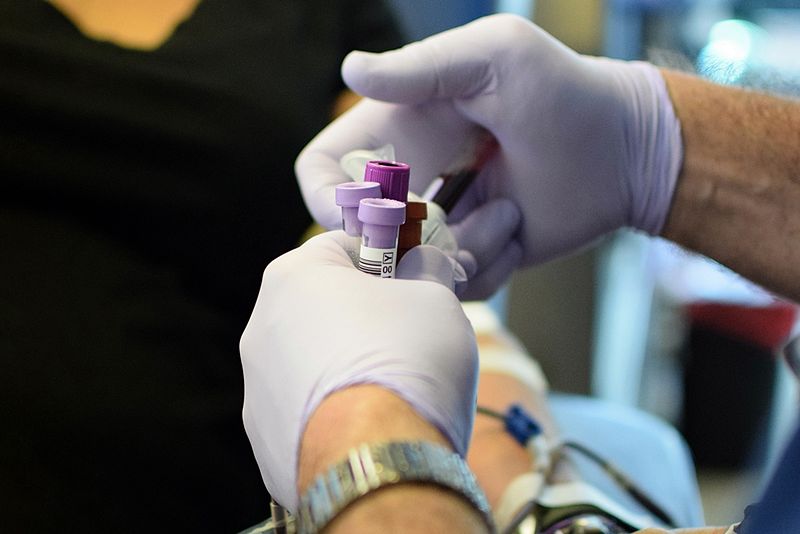
Vegasjohn
Nine months after the New York City Housing Authority promised to remove lead paint from contaminated buildings, barely one third have been cleaned up. Even worse, the city still doesn’t have a good plan to fix the problem. This is a public health emergency that will only get worse as the city delays.
For a little background, the federal government recently took New York City’s public housing system (known as NYCHA) to court for underreporting and then lying about the presence of lead paint in its apartment buildings. NYCHA agreed to clean up the nearly 6,000 apartments known to have peeling lead paint, as well as to inspect every apartment where lead paint may be present: a total of almost 130,000 units. So far, it’s barely made a dent in either repairs or testing.
There is no safe level of lead in the body. When small children ingest dusty or peeling lead paint, they’re eating poison. Even small amounts in the blood can move into the brain and bones, affecting everything from focus and performance in school to a kid’s ability to develop relationships. If the lead is caught early, treatment is possible. If not, these effects on the brain are permanent.
The other issue here—and, arguably, one reason that this scandal only came to light recently—is that the city doesn’t have good data on lead testing or lead poisoning in kids. New York City’s Department of Health recently reported that since 2010, the number of children who tested positive for lead dropped 69 percent. But the DOHMH doesn’t test a random sample, nor do they test a consistent number of children from year to year. And even though New York State mandates that all one- and two-year-olds are tested annually for lead poisoning, actual testing rates are only around 60 percent in the New York City area.
Even with poor quality data, we know enough to know we have a problem. The same DOHMH report showed that from 2010 through June of last year, 1,704 children living in NYCHA housing were found with at least 5 micrograms of lead per deciliter of blood (the threshold considered dangerous by the federal government).
The city’s responsibility to these kids is even greater because they’re the most vulnerable of the vulnerable. They’re low-income and disproportionately minorities, and already face significant social and economic barriers when it comes to school performance and eating healthy foods (children who have a diet deficient in calcium and iron typically absorb more lead). The added impact of lead poisoning is a risk factor on top of risk factors.
New York City needs to speed up its work to make NYCHA housing safe. Rather than painstakingly testing every unit before acting, the city instead should operate on a “contains lead until proven innocent” model. We already know that likelihood of lead paint in old buildings is high, and most of NYCHA’s buildings predate 1960, when lead paint was outlawed in New York City. NYCHA should use some of the $88 million that it agreed to spend on housing improvements to do lead abatement in every apartment that is home to a child under six years old. These abatements don’t necessarily need to involve removing every speck of lead paint, but they should aim to enclose surfaces like window sills so that the apartments are deemed lead-safe, as recommended by the state. Might some of this money be spent “abating” lead that isn’t there? Maybe. But we don’t have years to waste when kids’ health is at stake.
Next, NYCHA should open lead testing stations at NYCHA apartment buildings. The stations should be staffed by a nurse who can provide counseling and prescribe treatment if a child’s test is positive. The city should aim to test 100 percent of children who live in NYCHA housing by this time next year.
To make sure overall lead testing rates also improve, the DOHMH should do outreach to pediatricians in the city, training doctors and nurses so that the state law for testing is actually enforced—especially for patients of Health + Hospitals (New York City’s public hospital system). For any children who have high test results, the city should work with the healthcare system to follow up with families and document future testing.
We owe these children poison-free living spaces. We owe present and future residents data that will allow New York City to track, address, and respond to lead poisoning, in NYCHA housing or otherwise. Spending years to test apartments, and months to abate the ones already known to contain lead, is not acceptable—especially after years of lying and misrepresenting data. It’s a failing not just of the public housing system, but of the public health system as well. New York City’s youth are counting on us to do better.
Jocelyn Howard is an MPA student in health policy and advocacy at NYU’s Robert F. Wagner School of Public Service.









2 thoughts on “Opinion: NYC Needs a More Aggressive Approach to Testing and Fixing Lead Poisoning”
The city maintains a database of Lead Service Line locations. The database indicates the material used in the water service line for every building in NYC.
https://data.cityofnewyork.us/Environment/Lead-Service-Line-Location-Coordinates/bnkq-6un4
Where is the love?